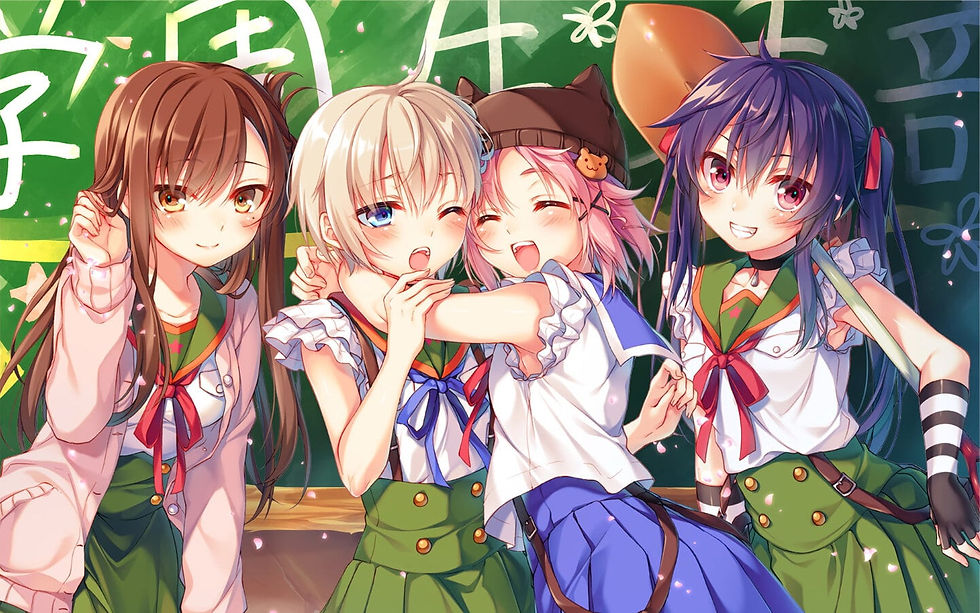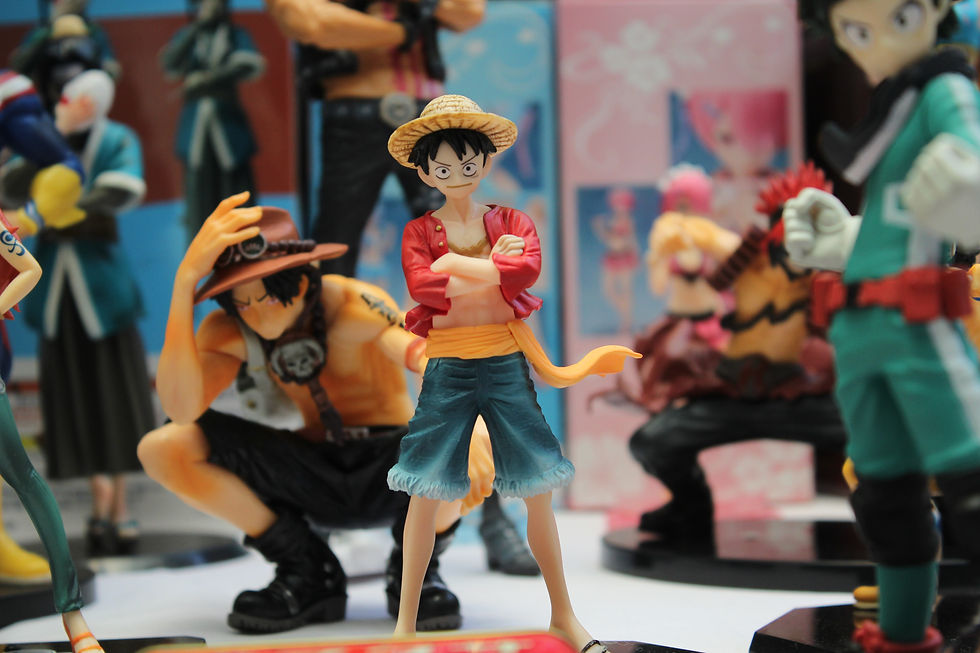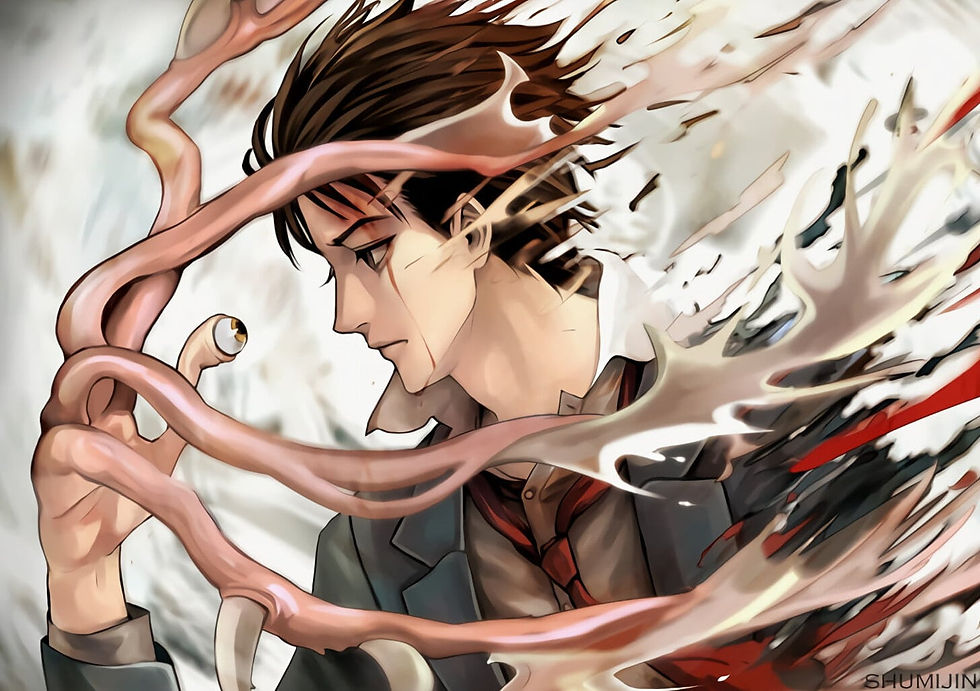The first chapter of your webcomic or webtoon
Updated: Nov 25, 2022
Stories are a rollercoaster. Like a rollercoaster, you need to consider how long the ride will be, the speed, the highs, lows, and the steepness of each bump. The first chapter convinces readers to invest their time into your webcomic. Every chapter afterward is meant to make them stay on that rollercoaster adventure. In this blog, I will be discussing things I’ve noticed successful webcomics and webtoons do in their first chapter.
Set the tone
The first chapter should set the tone of the story so that readers know what to expect. Readers will have preferences that can’t be controlled. We want to attract readers who enjoy the genre or tone of the story we are creating. One of the reasons readers drop a story is because the tone changes mid-way through. Once you set the expectation, you need to meet it and stay consistent.
My Hero Academy is a superhero manga, and we see that in chapter one. Readers who like superheroes, or Marvel and X-men movies will be attracted to this aspect of the manga.
True beauty is a sweet romance webtoon, it is mostly light-hearted and comedic. There’s no murdering, heads flying off, or characters entering boxing matches. (At least from the chapters I have read). If the creator suddenly included those things, it would be out of place and would deter the current reader base.


Of the two images, which would you like to create a webtoon about? How can you make your webtoon fit that tone?
Quick tip –
If a boxing match was to appear in True Beauty, it would need to fit the tone. For example, a comedic, light-hearted match where it doesn’t matter who wins.
Another example is if it was happening in the character's head, to illustrate their emotions. Something similar has been done in many shoujo comedy manga such as Skip Beat. The tone briefly switched to horror to show the main character is angry.
Plot Twist in Tones
You can have plot twists that change the tone of your webcomic. However, the tone will still determine who will read your webcomic or webtoon. You will need to stay consistent with the change you've made or balance the two tones. For these reasons it is better to have this type of plot twist in the first chapter of your webcomic.
Although there are other types of plot twists, they don't change the webcomic’s tone. For example, in Attack on Titan, around season 2, we find out that titans are humans. In fact. this plot twist deepens the dark tone of the manga/anime.
School Live

An example of a plot twist that changes the tone of the story is School Live chapter one.
Chapter one follows Takeya Yuki and her daily school life. She is bright, cheerful, and friendly toward her classmates. Takeya is part of the school live club, which means she lives at school with her three other club members (and a teacher).
The plot twist comes when, in chapter one, the mangaka reveals that Takeya has been talking to herself the whole time. There were no classmates and her classroom looks like a tornado ran through it. All the windows are broken, tables chipped and chairs scattered. The manga (and anime) changed from bright and friendly to dark and depressing. This is where chapter one ends.
Certain readers will be repelled by the dark tone. But because the tone changed in the first chapter, it filters readers into those who enjoy dark anime and those who don't. Readers like myself, who like dark stories become hooked by the sudden change.
Genre

Certain people will like certain genres. For this reason you should make the genre of your webcomic clear. Doing so attracts readers who are most likely to enjoy your webcomic/webtoon.
Some genres to consider are:
Fantasy
Isekai
Romance
Comedy
Shonen
Sci-fi
Thriller
Consider the genre and level of violence. Is your webcomic a crime comedy or crime thriller? Not everyone likes violence and not everyone likes romance. In addition, you can have sub genres, one popular example is a romantic comedy.
Theme
“A literary theme is the main idea or underlying meaning a writer explores in a novel, short story, or other literary work.” - Masterclass
The theme of your webcomic doesn’t impact the tone massively. But it is something to consider. The theme creates opposition between the protagonist and antagonist. This opposition allows the audience to explore two sides of the argument.
Examples
The main villains in One Piece are pirates who represent everything Luffy is against – friendship, freedom of choice and movement, etc.
Attack on Titan explores freedom and war. It asks, ‘to what extent would you go for the freedom of your people?’ The theme is highly prevalent in the final season part two.
The webtoon Lookism explores beauty standards and status.
The webtoon Alta explores selfishness versus selflessness.
Quick tip –
While almost every story has a theme, the theme is not always the central focus.
Many Shonen share identical themes of friendship being the strongest force.
Introduce the main character
The first chapter is where you introduce the main character to the reader. Its even better if you do so in an interesting way. First introductions matter. It sets impressions and gives readers clues about the main character’s life and personality. When you first introduce a character, consider:
How they are dressed
Where they are
Who they are interacting with
What they are doing
My Hero Academy’s first chapter
In My Hero Academy, we are first introduced to Midoriya as he is protecting a classmate from being bullied. Despite being powerless, Midoriya doesn’t back down. From this, we learn that Midoriya is strong-willed, brave, caring, and weak. As the first chapter progresses, we discover more about Midoriya. We learn he is obsessed with superheroes, admires All Might, and wants to be a hero, among other things.

Emotional Impact
As well as introducing the main character, make us care about them.
Karl Iglesias, the author of Writing for Emotional Impact, describes three ways to make the reader care about a character.
Make us feel sorry for the character (e.g showing them being unjustly abused, betrayed, neglected, etc)
Show us that the character cares for something or someone other than themselves. (e.g a plant, pet, child)
Admirable traits (a list of things you like in a person found in that character)
Every story has these three methods which make readers care about the protagonist. Some creators do so unknowingly.
Bullying is a popular method of extracting sympathy from the reader.
In the first chapter, one or all of the three methods should be utilized. This is to make the reader want to follow the character along the journey. Karl Iglesias explained that in the first few minutes of Wall-E, the three methods are used almost twenty times.
Daniel Park
In Lookism, we care about Daniel not just because he is being bullied, but because it is affecting his relationship with his mother. We care about Daniel because we feel sorry for him and because we know he is a kind and caring person.
Eren Yaegar
In Attack on Titan, we care about Eren because he protected Armin from bullies and he deeply cares for his friends. He is brave (an admirable trait) and ambitious. We also care because he lost his mother, however, that comes in chapter two.
Karl Iglesias explained that something as simple as watering a plant could make readers warm up to a character. Because watering a plant is caring for something other than yourself.
Introduce the central problem
The central problem is an issue that spurs the webcomic and characters in the story. In Tokyo Ghoul the central problem is the conflict between Ghouls and the government.
The central problem in the manga Parasite is when unknown parasites start infecting people. This leads Shinichi to be partially infected which changes his life forever and begins the story.
Want and problems
When using Dan Harmons’ story circle, the central problem creates the ‘want’.
In My Hero Academy, the central problem is the villains. Midoriya wants to be a hero and fight against villains but he has no powers.
In the webtoon Subzero the central problem is the age-old conflict between the two dragon clans. Clove wants to save her people who were suffering due to the war and to end the conflict.
Quick tip –
Not all characters have a want at the start. But the inciting incident leads them to want something. Parasite and Tokyo Ghoul are two examples. Both protagonists' want changes throughout the manga.
Inciting Incident
After informing the readers about the main problem in the webcomic world, introduce the inciting incident. This is the event that pulls the main character into the central conflict.
Midorya's inciting incident
The inciting incident for Midoriya in My Hero Academy is when he meets All Might who he looks up to. But when Midoriya’s greatest hero told him to give up on his dream, it shatters him. This only increases sympathy and care for the character.
However, near the end of chapter one, All might changes his mind and tells Midoriya that he can become a hero. This leaves us with the question ‘how?’. Midoriya himself said, “This is the story of how I became a great hero.” Knowing he has no powers makes the reader want to follow his journey.
The curious reader
The first chapter should end in a way that makes the reader want to know the outcome of the inciting incident. This makes the reader click on chapter two, curiously wondering “what happens next?”
The last chapter of Parasite
In Parasite, the inciting incident is when Shinichi is infected. The reader next sees another infected person standing over a dead body. The chapter ends, making the reader want to know what will happen to Shinichi now he has a parasite in his arm.
Having seen another infected murder his wife, the reader’s curiosity is amplified. We want to know what will happen to the town and how Shinichi will react to the central problem. "What will he do next?"

End the first chapter with a question
Think of a question you want readers to ask. Then list ways you can end your first chapter that makes people curious about the answer to that question. These questions will then be answered throughout the story, or in the next chapter.
I’ve noticed that successful webcomics and webtoons make the reader ask multiple questions over the course of the story. They never fully satisfy their readers and keep them wanting to know more. These webcomics have many layers to them and a rich story that unfolds steadily. That’s not to say the ride is slow, but that there are many unexplored parts.

Opmerkingen